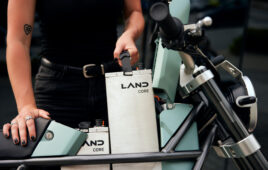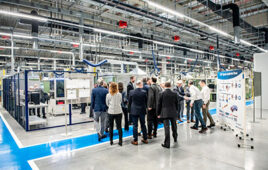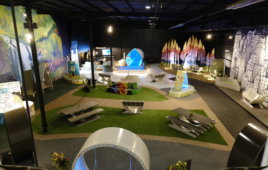 FlixBus and Freudenberg Sealing Technologies are collaborating on a future-oriented project for sustainable, CO2-free mobility. Together, Europe’s largest operator of long-distance bus travel, the FlixBus brand, and Freudenberg are working to put fuel cell-powered coaches on the road. The two companies will further extend their partnership in the near future through participation from a bus vehicle manufacturer. The companies are holding talks to finalize project parameters.
FlixBus and Freudenberg Sealing Technologies are collaborating on a future-oriented project for sustainable, CO2-free mobility. Together, Europe’s largest operator of long-distance bus travel, the FlixBus brand, and Freudenberg are working to put fuel cell-powered coaches on the road. The two companies will further extend their partnership in the near future through participation from a bus vehicle manufacturer. The companies are holding talks to finalize project parameters.
During the past few years, the bright green FlixBus buses have grown to become an indispensable part of Europe’s long-distance transportation network. They connect destinations across Europe and carry passengers to roughly 30 countries. The modern long-distance buses of the FlixBus fleet are one of the most environmentally friendly means of transport. The same applies to FlixTrains, which operate on 100% green electricity.
Collaboration between FlixBus and Freudenberg will take these even further, said Fabian Stenger, Managing Director of FlixBus DACH.
“We want to help shape the future of mobility,” Stenger said. “The modern FlixBus and FlixTrain fleet is already extremely environmentally friendly. Nevertheless, we are constantly asking ourselves how we can make travel even more sustainable and further reduce CO2 emissions per capita. Following the successful launch of three electric long-distance buses, we now want to develop the first long-distance bus with fuel cell drive together with Freudenberg and set another milestone in the history of mobility.”
In early 2018, Freudenberg further strengthened its fuel cell expertise by acquiring a fuel cell manufacturer. During the same period, the company also expanded its technological expertise in battery technology by acquiring a minority interest in U.S. battery manufacturer, XALT Energy. Freudenberg now holds a majority stake in the company.
These strategic acquisitions have solidified the company’s position as a provider of fuel cell and electric battery powertrain solutions. The company is pursuing integrated battery-fuel cell systems that will address power, base load and unique operating cycles in a range of heavy-duty applications that include truck, bus, commercial marine and rail transportation. Through unique vertical integration, Freudenberg will become a single source supplier of complete battery, fuel cell and hybrid energy systems that include all of the components, modules and subsystems necessary for their operation.
“The technical requirements for performance and long-term reliability are particularly high in heavy-duty businesses. This is in line with our technological and innovation expertise,” said Claus Möhlenkamp, CEO of Freudenberg Sealing Technologies. “We see the fuel cell in combination with electric batteries as an integral part of the mobility of the future. With FlixBus, we have found a partner for this zero-emission application and are looking forward to working together on this groundbreaking project.”
FlixBus has clearly defined the requirement profile for its vehicles. Performance characteristics such as acceleration should correspond to those of today’s diesel-powered, long-distance buses that are compliant to the Euro IV standard. These fuel cell vehicles should cover at least 500 km of continuous use without refueling. Hydrogen refueling, itself, should be possible in 20 minutes or less — a time similar to what is required to refill a diesel fuel tank.
The hybrid system, which intelligently combines battery and fuel cells, can be used in long-distance bus transportation and heavy commercial vehicle applications. Initially, a representative bus fleet of 30 vehicles will be equipped with a hybrid powertrain to validate system performance. The two companies are also aiming for public funding within the framework of the German “National Innovation Program Hydrogen and Fuel Cell Technology” (NIP). The aim is to ensure that this technology quickly reaches market maturity and thus makes a significant contribution to reducing CO2 emissions in the atmosphere.
Freudenberg Sealing Technologies
fst.com
FlixBus
flixbus.com/company/sustainability
Filed Under: Green engineering • renewable energy • sustainability




